Discover 11 hidden attractions, cool sights, and unusual things to do in Suceava (Romania). Don't miss out on these must-see attractions: Suceava fortress, Zamca Armenian Monastery, and Saint John the New Monastery. Also, be sure to include Dragomirna Monastery in your itinerary.
Below, you can find the list of the most amazing places you should visit in Suceava (Suceava).
Table of Contents
Suceava fortress
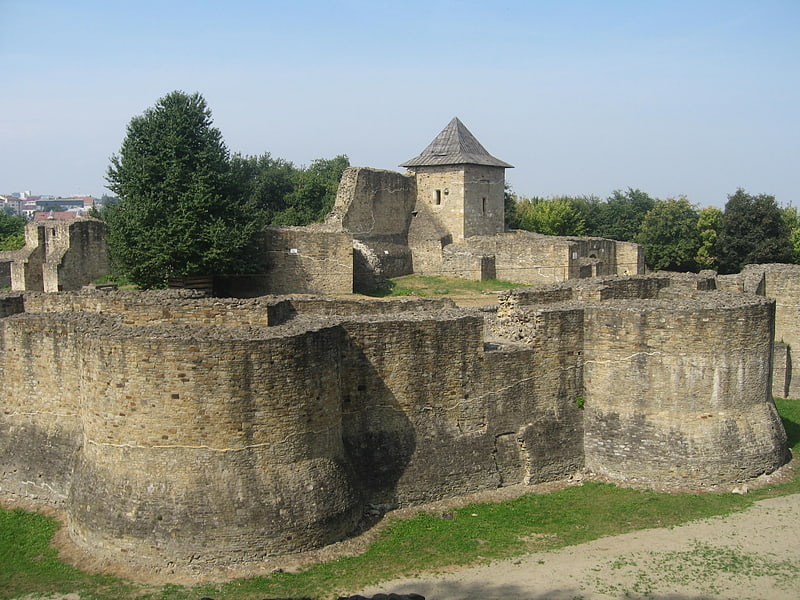
Castle in Sucea - a castle from the end of the 14th century. Expanded in the 15th century. Destroyed in the 17th century. Currently in Ruin, located in Suczea in North Romania, in Bukovina.
The castle on the hill prevailing over Suceava was finally erected by the 14th century Hospodar Moldovan Piotr Muszat, who moved here the headquarters of the prince. The primary building had the shape of a quadrangle (which is still recognizable in the center of the assumption), covered residential buildings and a chapel. In the second half of the 15th century, the expansion of the castle made Stefan Wielki, which raised new powerful fortifications, expanding the castle. Established in this way, Stefan's lifetime was effectively based all invaders (including twice with Turks, and in 1497 they were unsuccessfully besieged by Poles under Jan Olbracht), only in 1538 was released by the Bojars to the troops of Suleiman's wonderful troops.
During internal fights in the mid-sixteenth century, the castle was burned, his reconstruction was carried out in the first half of the 17th century. Hospodar Basil Lupa. Soon, however, (in 1653) again was destroyed during the intervention of neighbors against Basel, as a result of which he was deprived of the throne (during the defense of the castle he died Tymophych Chmielnicki). Ultimately, the work of destruction made an explosion in the fortress in 1675. From now on, the castle remains in Ruin. In the twentieth century, the castle ruins was partially rebuilt and maintenance.
Address: Aleea Cetății, Suceava
Zamca Armenian Monastery

Monastery in Suceava, Romania. The Armenian monastery of Suceava, also known as "Zamca", is a monastery of the Armenian Apostolic Church, dating from the 15th century, in the town of Suceava in northern Romania's Bukovina district.
The monastery was completed in the early 15th century, during the reign of Moldavian Hospodar Alexandru I Mușat). It was constructed as the bishop's seat for the local Armenian church in 1401 which was founded by Alexandru I. Saint Auxentius Church was designed to be the center of the complex. The church was renovated or rebuilt in 1606, when a number of other structures were added, among them the belltower, the gate, and a residential structure with a chapel to Gregory the Illuminator, all of which survive to this day. The church's interior was decorated with murals in the 18th century.
When James Louis Sobieski attempted to ascend to the Moldavian throne, the monastery was his base of operations. In 1690 it became the headquarters of the Polish Army for all of their operations in Moldavia related to Poland's participation in the War of the Holy League against the Ottoman Empire. Staying at the monastery for several years, the Poles built an extensive network of bastion fortifications which are well preserved to this day. The monastery's popular name, "Zamca", likely comes from this period; it is derived from zamek, the Polish word for castle.[1]
Address: 30 Strada Zamca, Suceava
Saint John the New Monastery
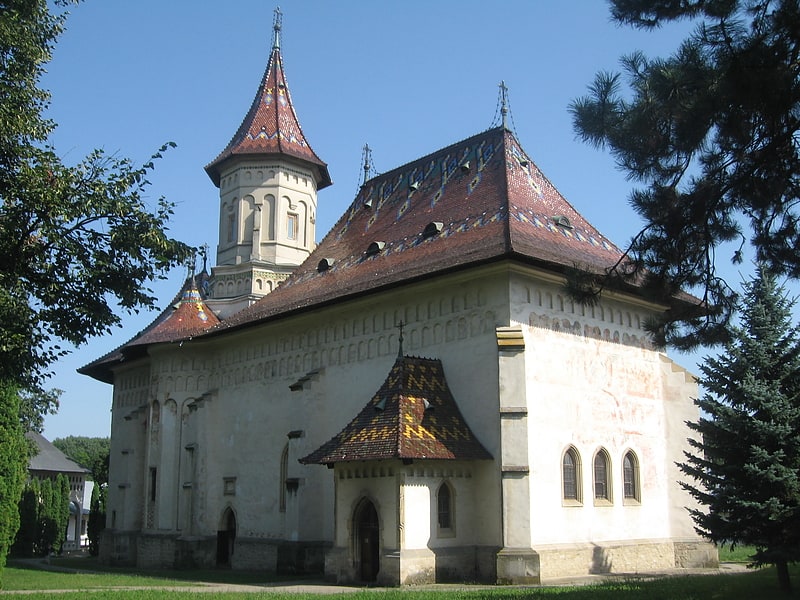
Also known as: Mănăstirea Sfântul Ioan cel Nou din Suceava
Monastery in Suceava, Romania. Saint John the New Monastery is a Romanian Orthodox monastery in Suceava, Romania. Built between 1514 and 1522, the monastery church is one of eight buildings that make up the churches of Moldavia UNESCO World Heritage Site, and is also listed as a historic monument by the country's Ministry of Culture and Religious Affairs. Its construction began during the reign of voivode Bogdan III the One-Eyed of Moldavia, after the nearby Mirăuți Church was devastated in 1513. The construction was completed by Stephen IV of Moldavia. The monastery church served as metropolitan cathedral of Moldavia until 1677 and, since 1991, it serves as the cathedral of the Archdiocese of Suceava and Rădăuți. The church is dedicated to Saint George and it has frescoes painted on the outside, typical of the region.
The monastery is dedicated to Saint John the New of Suceava, a Moldavian monk who preached during Turkish occupation and was subsequently martyred in Cetatea Albă, present-day Bilhorod-Dnistrovskyi in Ukraine. Alexander I of Moldavia brought his relics to Suceava in 1402. Besides the monumental church, the monastery complex includes a bell tower built in 1589 during the reign of Peter the Lame of Moldavia, a chapel founded by clergyman Anastasie Crimca in 1626-1629, old cells for monks (built in the 19th century), a house for the abbot (built between 1894-1896) and the surrounding walls.[2]
Address: Strada Ion Vodă Viteazul 2, 720034 Suceava
Dragomirna Monastery
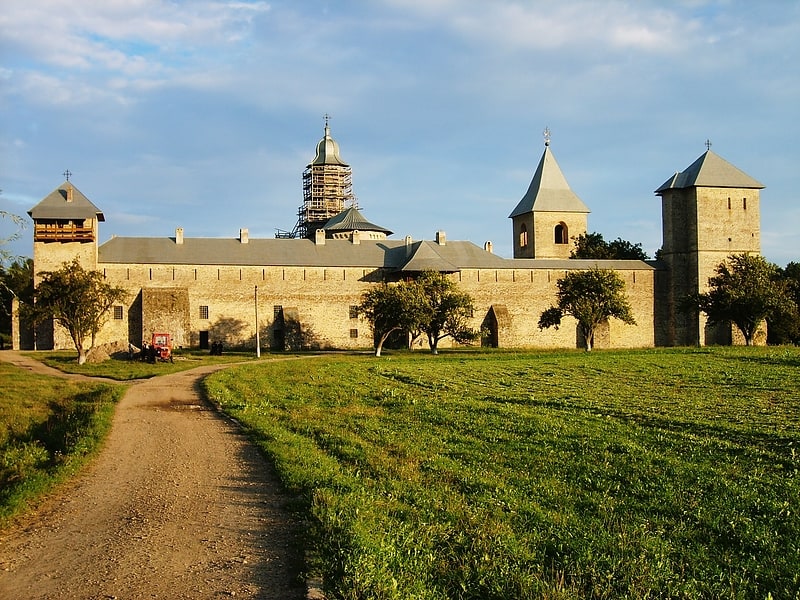
Also known as: Mănăstirea Dragomirna
Moldavian medieval fortress and church. The Dragomirna Monastery was built during the first three decades of the 17th century, 15 km from Suceava, in the Mitocu Dragomirnei commune. It is the tallest medieval monastery in northern Moldavia and renowned in Orthodox architecture for its unique proportions and intricate details, mostly carved into stone. It lies among forested hills of fir and oak. The history of the monastery started in 1602, when the small church in the graveyard was built and dedicated to Saints Enoch, Elijah, and John the Theologian. In 1609 the dedication of the larger church was made to the "Descent of the Holy Spirit".[3]
Address: Mitocul Dragomirnei, Suceava
Cathedral of the Nativity
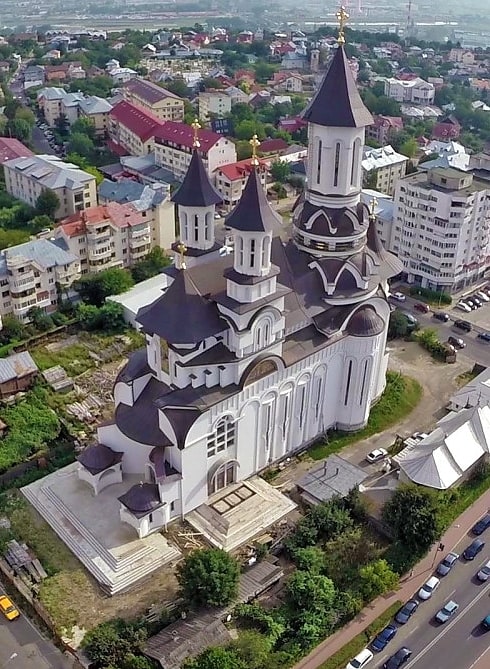
Also known as: Catedrala Nașterea Domnului din Suceava
Cathedral in Suceava, Romania. The Cathedral of the Nativity is a Romanian Orthodox church in Suceava, Suceava County, Bukovina, Romania. It is located in Mărășești–Zamca district, near the city center, on a plateau on Zamca Hill, dominating the skyline of the city. The church is visible from many locations in Suceava and its surroundings. Although referred to as a cathedral due to its size, it functions as a parish church.
The structure was begun in 1991, at the private initiative of some local personalities, and completed in 2015, with the help of the local authorities. The cathedral was designed by architect Doru Ghiocel Olaș, who changed completely the initial sketches made by architect Constantin Gorcea. The structure is 70 meters long, 20 meters wide and 82 meters high, being the one of the largest cathedral in Romania. It is also one of the twelve tallest Orthodox church buildings in the world.
On 4 October 2015, the new religious edifice was consecrated and opened for public service. At the ceremony there participated 10,000 people, 60 clerics and some local politicians. The church is dedicated to the Nativity of Jesus and the Presentation of Mary.[4]
Hagigadar Armenian Monastery
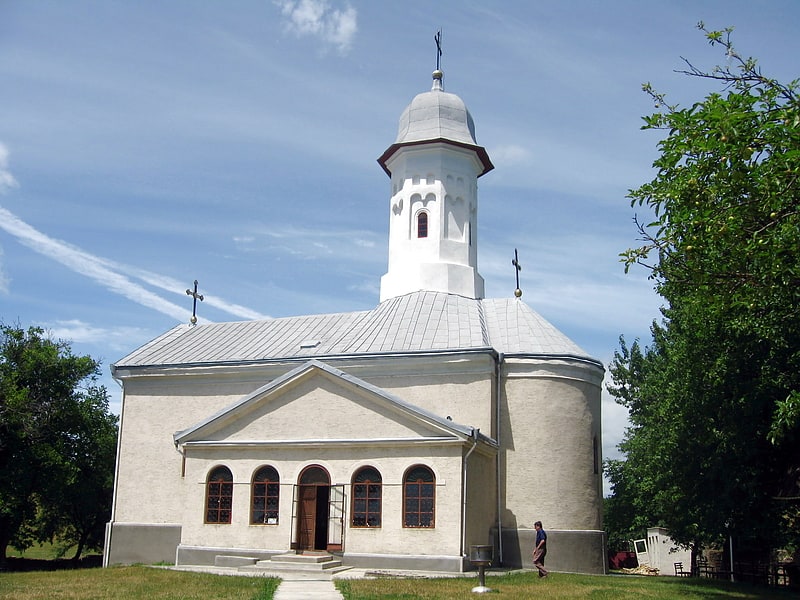
Hagigadar Monastery is a former Armenian monastery of nuns, built between 1512 and 1513 in the village of Bulai in the commune of Moara. The monastery is located near the E85 European road, on the left side, in the valley, before the entrance to Suceava municipality, 3 km from the city.
Hagigadar Monastery was included in the List of Historical Monuments of Suceava County, drawn up in 2004, with code SV-II-a-A-05504. The ensemble is composed of 2 objectives: the Church of the Assumption of the Mother of God - Hagigadar - dating from 1512 and having the code SV-II-m-A-05504.01, the enclosure wall - dating from 1512 and having the code SV-II-m-A-05504.02.
Hagigadar Monastery was built on Bulai's Hill, "on a round ridge, as if made by man's hand, on a green gorgan" (as Nicolae Iorga wrote), which lies in the middle of a valley. This monastery is dedicated to Our Lady and bears an Armenian name: Hagigadar meaning in Armenian "wish fulfillment".
Address: Strada Hagigadar 36, 727370 Bulai
Bukovina Museum
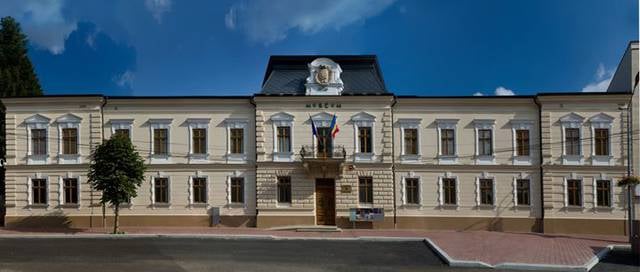
The Bukovina Museum is a museum located in the Romanian city of Suceava, named after the historical Bukovina region.
The Bukovina Museum consists of several individual museums, objects and memorial houses scattered throughout the region. They pursue their own programs and series of events, but are managed together. The headquarters is located in the History Museum (Muzeul de Istorie din Suceava), in the center of the city of Suceava. The History Museum is the oldest part of the Bukovina Museum and essentially the nucleus around which the complex with its various facilities was built. The History Museum was built in 1898 and is now a cultural heritage site. The Museum's collection includes photographs by German photographer Oliver Mark.[5]
Address: Stefan cel Mare 33, Suceava
Planetarium

Museum
Address: 13A Strada Universității, Suceava
Biserica armeană „Turnul Roșu” Suceava

Church
Address: 51 Strada Sbiera I. G, Suceava
Biserica armeană „Sfânta Cruce” Suceava
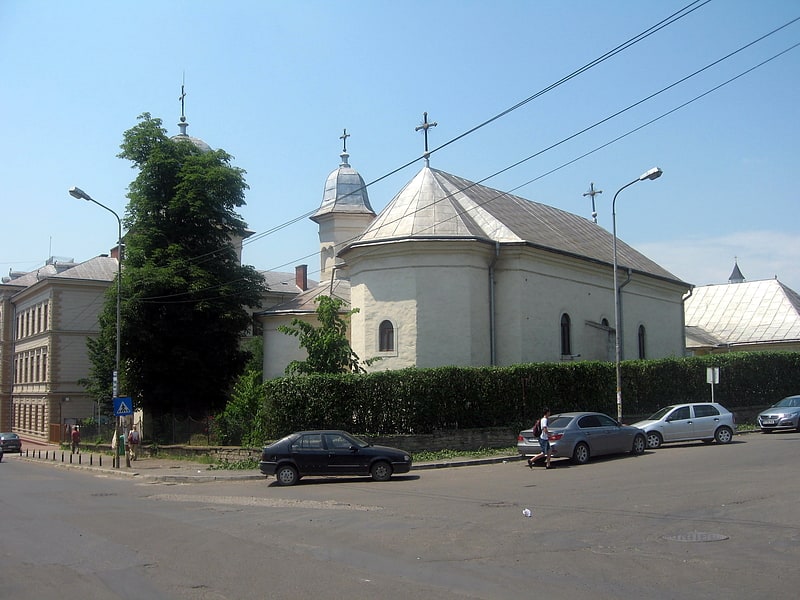
Church
Address: 1 Strada Armenească, Suceava
Ițcani

Ițcani is a neighborhood of Suceava, the town-residence of Suceava County in Bukovina, northeastern Romania, located some 5 km northwest of the town center. Ițcani was initially established in the 15th century, following a 1453 document issued by Alexăndrel, Prince of Moldavia.
During the 1780s, 8 ethnic German families settled here in the course of the Josephine colonization.
After the unification of Bukovina with the Kingdom of Romania in 1918, Ițcani was subsequently recorded on official population censuses by the Romanian authorities as a commune composed of two separate villages, more specifically Ițcanii Noi (German: Neu Itzkany) and Ițcani Gară (German: Itzkany Bahnhof).
Furthermore, according to the Romanian 1930 census, as much as 45% of the commune's population was composed of ethnic Germans, many of whom were later re-settled in occupied Poland during World War II as part of the Heim ins Reich policy plan initiated by Hitler's national socialists. Suceava North railway station is located in Ițcani.[6]